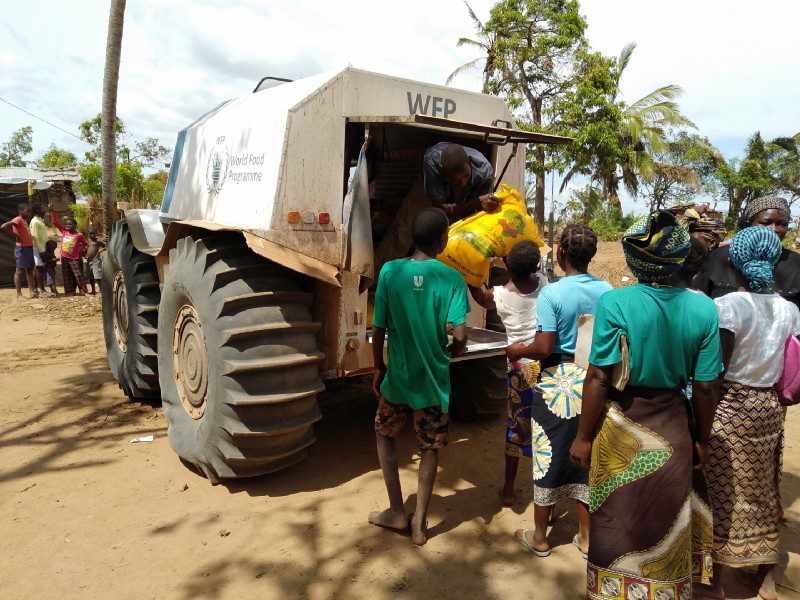The Long Road to Recovery
Cyclones Idai and Kenneth destroyed homes, wiped out fisheries, washed away roads and ruined hundreds of thousands of acres of farmland. Those who were hit the hardest are still struggling to get back on their feet, and now another storm – COVID-19 – has made landfall.
WFP is doing everything it can to support recovery projects, but nearly 2 million people are still food insecure amidst this new pandemic.
Emergency Response: WFP in Action
The World Food Programme was able to reach more than 1.8 million people in Mozambique after the storms. People like Maria, Virginia, Wonder and Shayne.
 WFP/Rein Skullerud
WFP/Rein SkullerudMaria
Before the cyclone, Maria Joao and her husband caught and sold fish. In the aftermath, her family got warm meals from WFP at a school shelter.
 WFP/Alexis Masciarelli
WFP/Alexis MasciarelliVirginia
Virginia Jone provided shelter to 12 of her family members. WFP gave them enough rice, beans and cooking oil to last for two weeks.
 WFP/Tatenda Macheka
WFP/Tatenda MachekaWonder & Shane
Two friends, Wonder and Shayne, lost their homes to Idai. After the storm, they both said they want to be WFP pilots when they grow up.
















